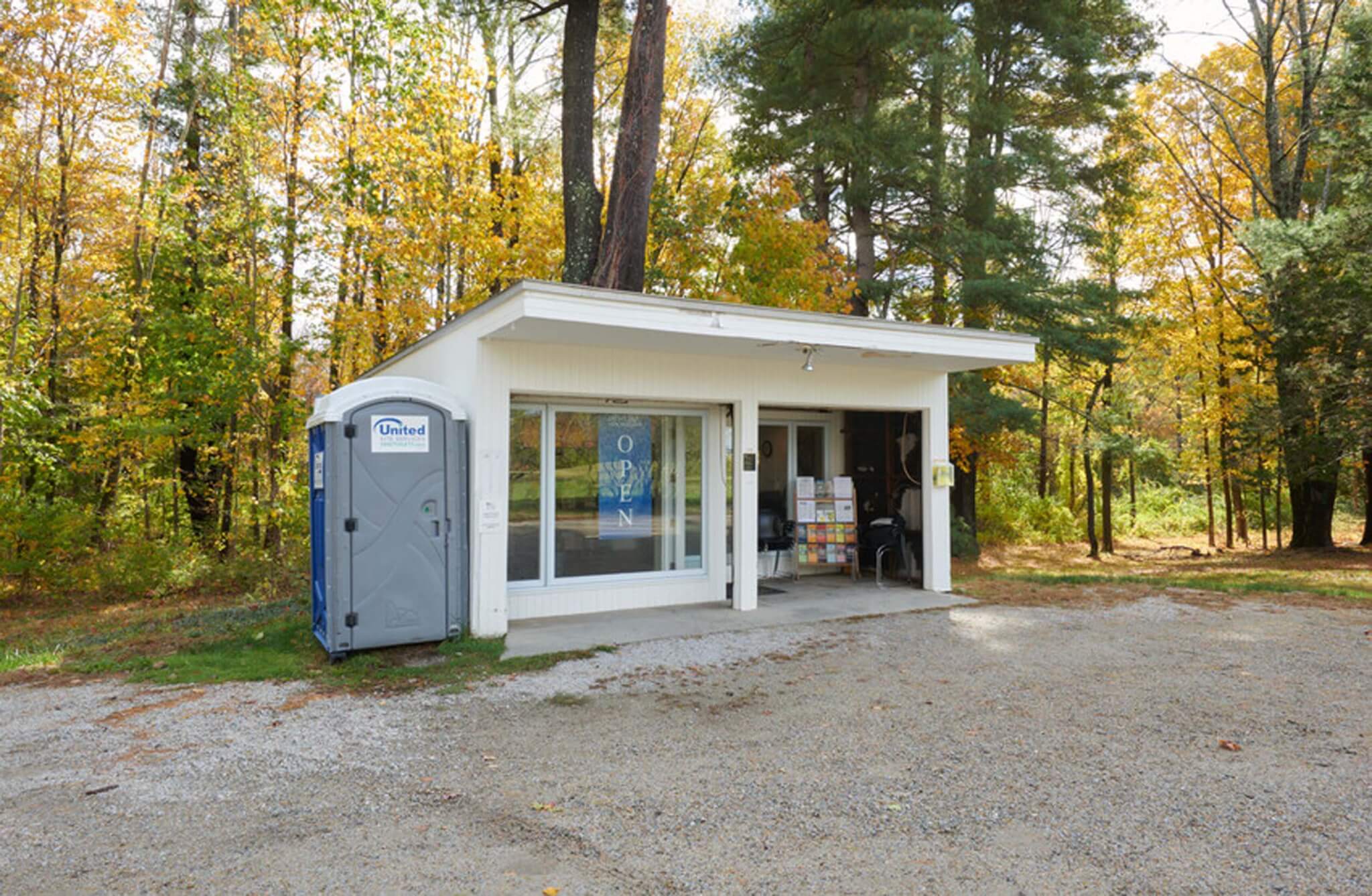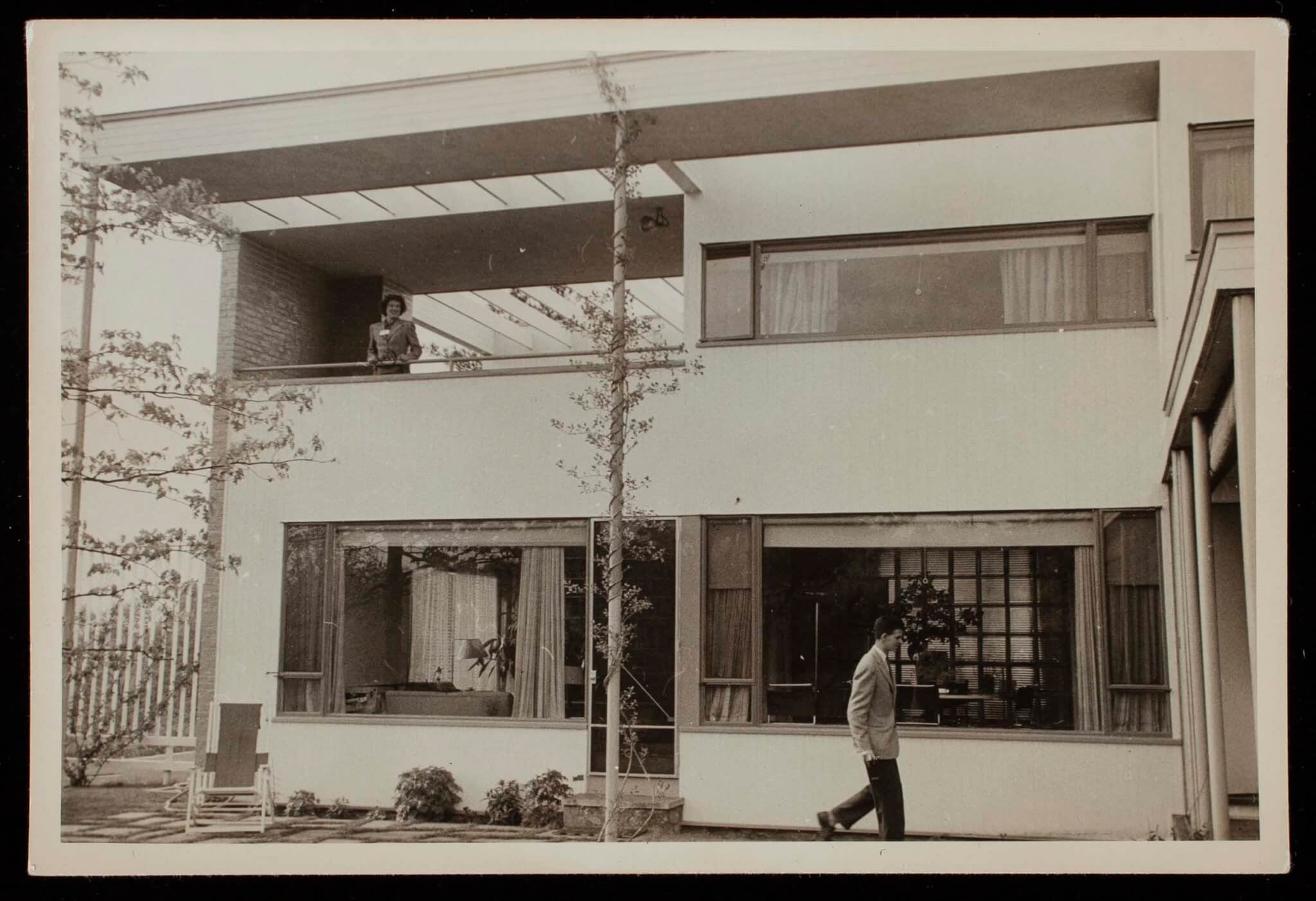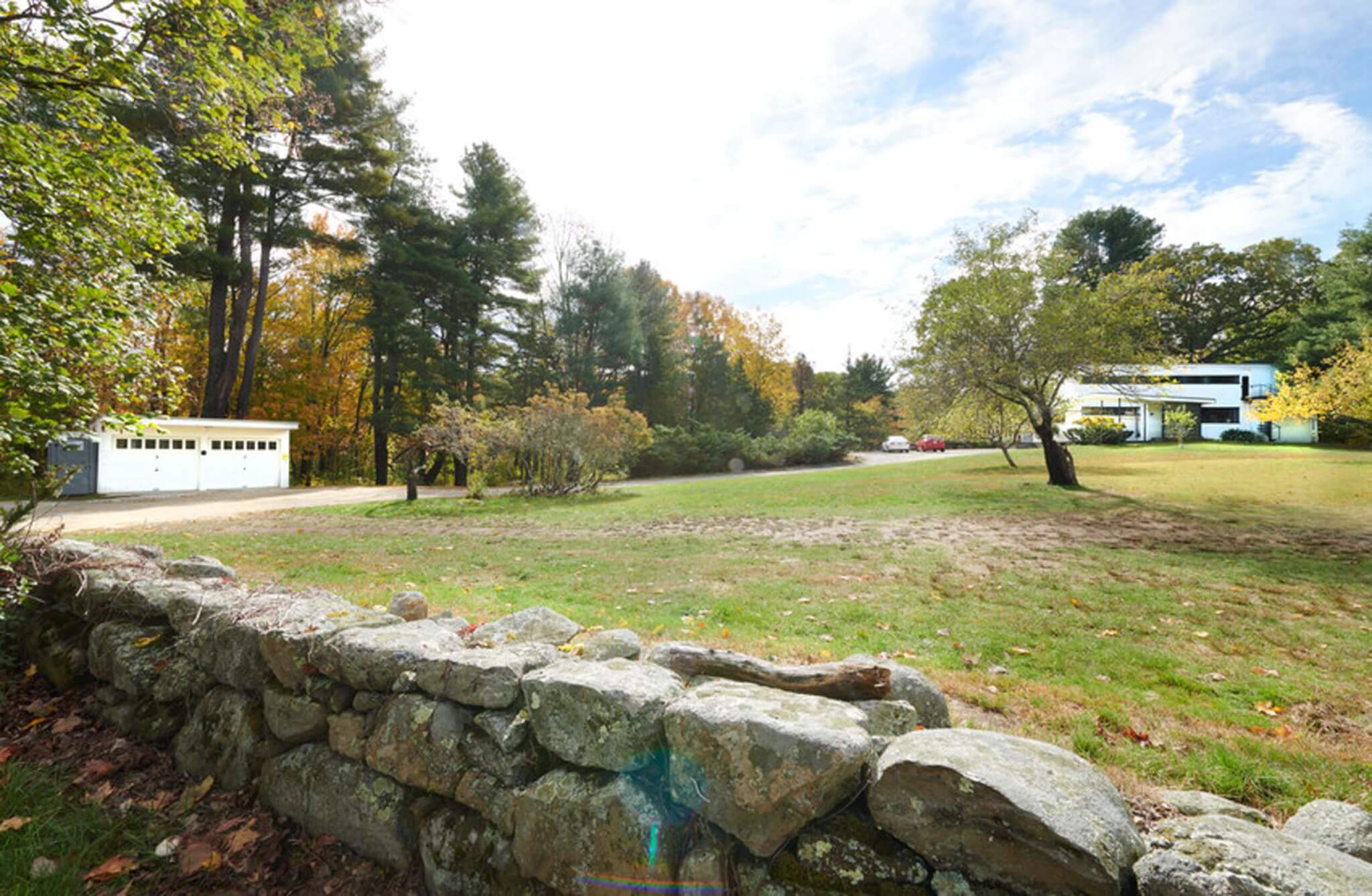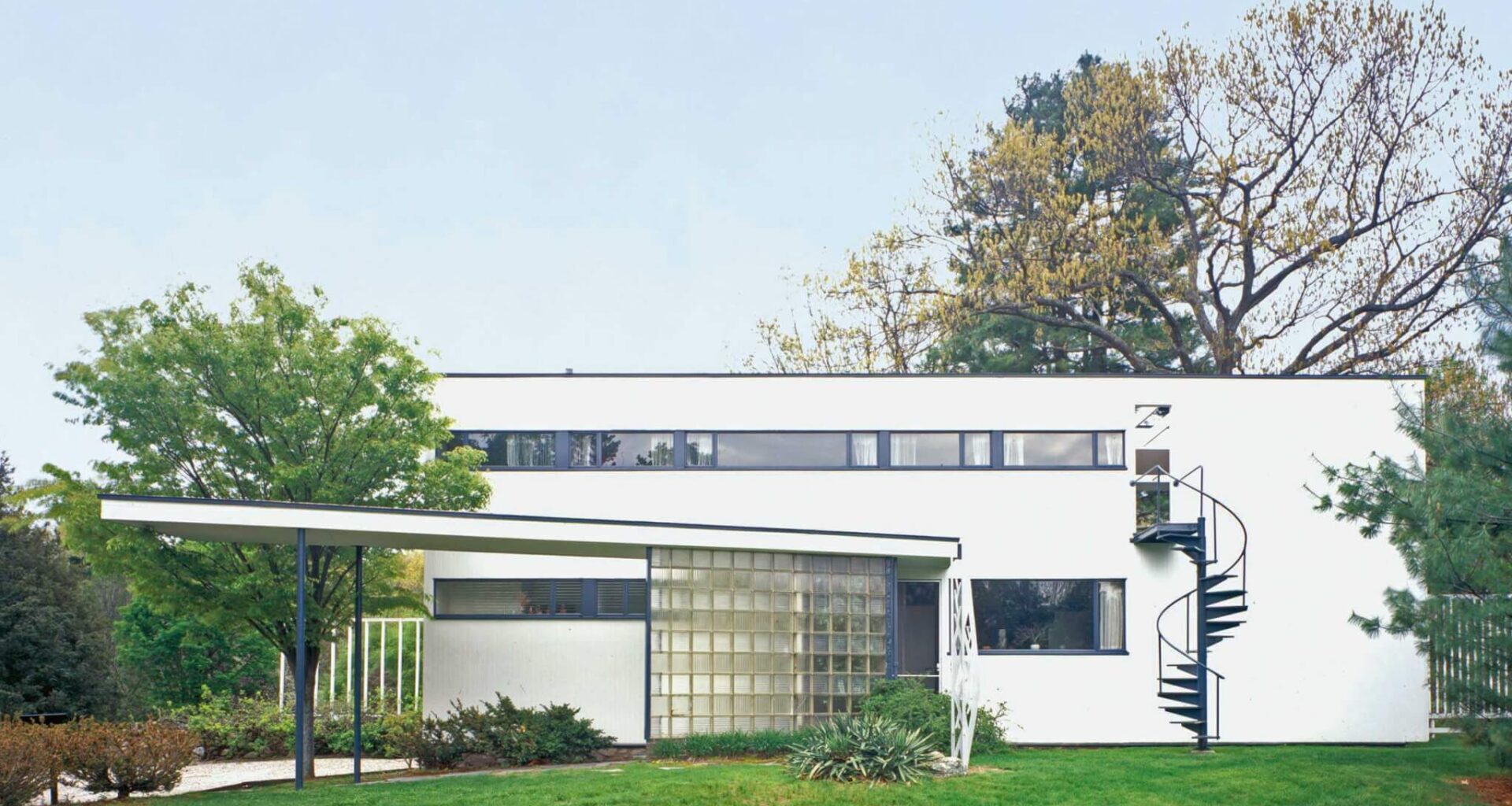Historic New England has launched a competition to design a separate, permanent public restroom for Gropius House, the Lincoln, Massachusetts, home of Bauhaus founder Walter Gropius.
Since the historical site opened to the public in 1984, visitors have had to use a porta potty located outside of the home’s former garage, turned into a repurposed welcome center. As a designated national landmark, and one of the preservation organization’s most visited sites, the temporary bathroom relieves thousands of design enthusiasts a year.
 The house was designated a National Historic Landmark in 2000 and is one of Historic New England’s most visited sites. (Courtesy Historic New England)
The house was designated a National Historic Landmark in 2000 and is one of Historic New England’s most visited sites. (Courtesy Historic New England)
Beyond the logistical headaches presented by the Gropius House’s unconventional toilet set-up, it’s also an eyesore. “An ugly Port-O-Let is the first thing people see,” said Vin Cipolla, President and CEO of Historic New England. “Now a distinguished group of architects and journalists can [interpret] its forward-thinking design, they are cultivating new interest in an important modernist building.”
 The garage is used as a welcome center for the historic property. The bathroom facilities are located in the lone portable toilet. (Courtesy Historic New England)
The garage is used as a welcome center for the historic property. The bathroom facilities are located in the lone portable toilet. (Courtesy Historic New England)
The program and marching orders for competition entrants is simple: Building a place that’s a place to go, literally. The scope will also include the redesign of the current visitor center. With this open call, Historic New England hopes to foster new discourse that might expand on Gropius’s expansive design legacy. To do so, the initiative will comprise of two parallel competitions: one for practicing design professionals and another for architecture and design students.
The competition jury includes:
Antoine Picon, G. Ware Travelstead Professor of the History of Architecture and Technology, Harvard Graduate School of Design
Nader Tehrani, Founding Principal, NADAAA; faculty and former dean, Cooper Union School of Architecture
Philip Kennicott, Pulitzer Prize–winning art and architecture critic, The Washington Post
Suzanne Stephens, writer, editor, and critic in the field of architecture and faculty in architecture, Barnard College
Tanja Hwang, curator, Department of Architecture and Design, Museum of Modern Art
“We are launching this initiative as an exceptional opportunity to conduct a global survey of the Bauhaus’s enduring influence – how its philosophy continues to shape contemporary design practice,” said Allen Kolkowitz, a Trustee of Historic New England in a press release.
 The Gropius House was originally constructed in 1938. (Courtesy Historic New England)
The Gropius House was originally constructed in 1938. (Courtesy Historic New England)
Originally constructed in 1938, the house represents a pivotal moment in architectural history. At the time, Gropius’s Bauhaus had been shuttered by the Nazis due to its supposedly degenerate modern art, and Gropius was forced to flee to the United States. He landed at Harvard, a school that had been beholden to the Beaux-Arts, with both teachers and students seeing no need for change. But for some modernist at the time, it was an opportunity to get a seismic architect for Harvard’s architecture dean’s chair.
 The property spans a 4-acre, rural site. (Courtesy Historic New England)
The property spans a 4-acre, rural site. (Courtesy Historic New England)
To sweeten the pie, some architectural grandees helped Gropius answer a call of nature—they landed on a 4-acre site about ten miles away from the university for the master architect’s working home and office. In designing the home, Gropius envisioned the house as both a private residence and tool for teaching, a way to share Bauhaus principles with his future students. With this new competition, his ambitious continue for a new generation of architects and designers. “I can’t wait to see what this talented group comes up with,” said Cipolla.
More information about the competition and the entry requirements can be accessed here.
James McCown is an architectural journalist and the author of The Home Office Reimagined: Spaces to Think, Reflect, Work, Dream, and Wonder (Rizzoli, 2024).

